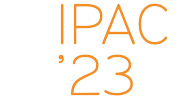Speaker
Description
Experimental beamlines often are regularly reconfigured to meet changing requirements of the experiments and to minimize beam losses. The configuration is usually done with the help of beam optics tools like MADX. These tools offer matching capabilities which allow to find solutions in terms of quadrupole strengths. However, such solutions are found by satisfying the given constraints only and do not take into account limited precision of actual quadrupole devices. Under the influence of quadrupole errors due to magnetic hysteresis, power converter trips etc, the original beamline optics often degrades. This results in beam losses or loss of focus at the experimental target. Readjustment of the optics costs valuable experiment time. Hence, it is desirable to operate a beamline configuration which not only meets the requirements but is also robust against quadrupole errors. Such a configuration will deviate from its nominal properties only by a small margin even when the quadrupole strengths deviate within specified intervals. We present the systematic exploration of beamline configuration space to identify robust configurations. The results are discussed for the BIGKARL beamline at Forschungszentrum Jülich and the findings are supported by experimental data.
| I have read and accept the Privacy Policy Statement | Yes |
|---|

